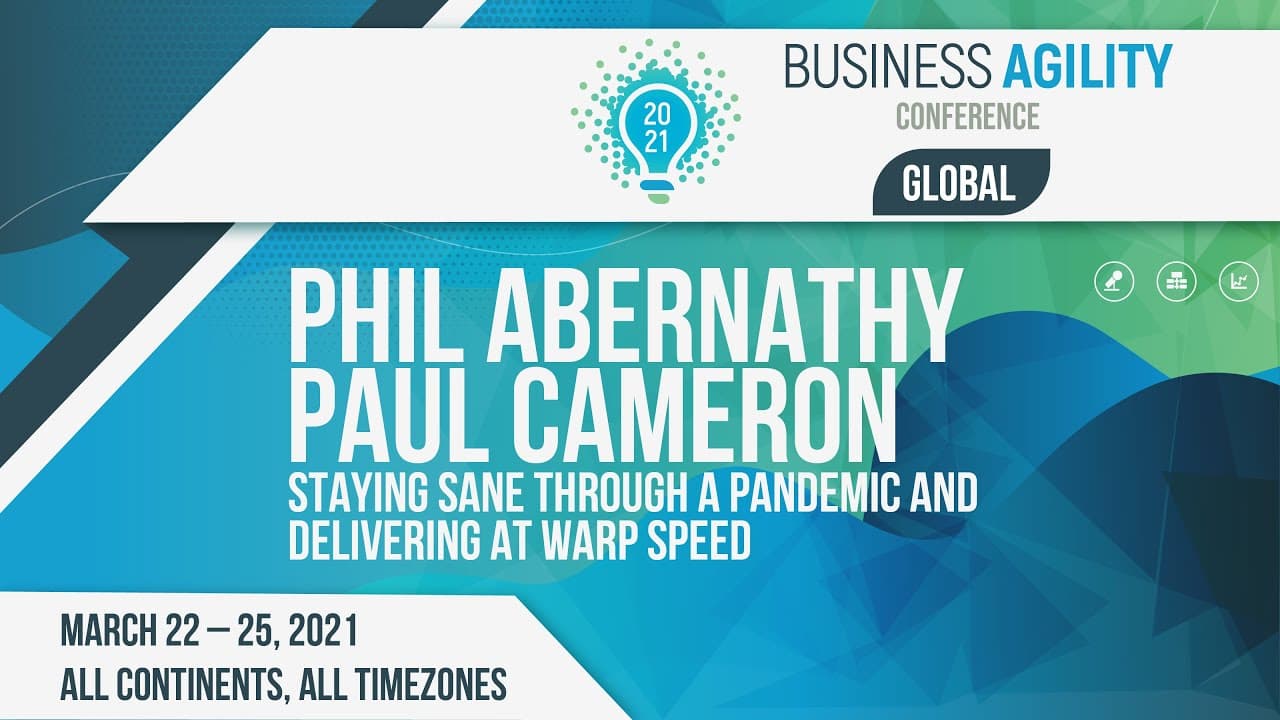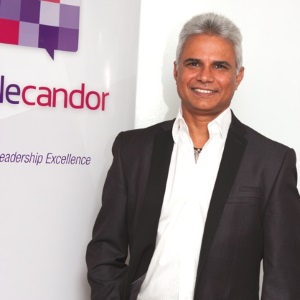Paul's the CEO and founder, and I've been CTO for Zing since November 2019, just before the pandemic started. Today, we'll talk about the challenge Zing is trying to address, and it’s important to understand the business challenge before diving into how agility has helped us deliver. In four months, we launched the foundation of a full ERP framework from the day we started and began iterating right after that. We’ll cover product, platform, people, and process, and touch a bit on COVID, discussing the positives and challenges it presented. We’ll go through these topics for about 25 to 30 minutes and then have 15 minutes for questions. With that, I'll hand over to Paul to talk about the Zing challenge.
The Zing Challenge
Hi everyone, and thanks for having us here today. As Phil mentioned, our little company has been around for a short time, but we’ve found a real niche. My wife and I started a small business and couldn’t believe the lack of technology available to run a small or medium-sized business. To manage everything, I had to assemble 12 pieces of SaaS software, costing around 700 USD per month. That wasn’t scalable or practical. We thought, why not build something ourselves? So, Phil joined, and we decided to create Zing. Let’s go to the next slide, Phil.
We transitioned from complexity and high costs to a simplified ERP system that covers everything: websites, e-commerce, CRM, marketing, staff management, surveys, and feedback. It’s all-in-one, end-to-end, easy to use, and provides measurable results. Now we’re in the market with salon chains, medical practices, counselors, chiropractors, physiotherapists, and gyms joining us. Why? Because it’s easy to use, end-to-end, and affordable. We couldn’t have created this without following agile principles. We're a small team, but we worked very closely together. We’ll share that story with you now. Let’s go to the next slide, Phil.
Product Development
Let me talk a little about the product and how we got here. Before COVID, we spent a week in Slovakia, mapping out the entire customer journey. It was frustrating but insightful. We identified many areas where a customer interacts with the business, and this helped us start building the software. This was an example of evolutionary design, where we just had enough to get started and kept refining as we went along. We knew the vision and got to work in November 2019. Let's go to the next slide.
This is us pre-COVID when we were called Service Quick. After a fantastic rebranding exercise with some people from Lithuania, we renamed the company to Zing. Credit to Phil for coming up with the name. When asked, "What do we do?" he answered, "We put a zing in business," and that’s exactly what we do. This is the team from that time. We were fortunate to have a real customer from the salon business that my wife and I set up. In April, only five to six months after starting the development, the team was already testing the platform in the salon. It wasn’t without challenges—releasing version 1.0 of a SaaS platform always has its gremlins—but they did a wonderful job, and the salon now runs entirely on our platform.
Pitfalls and Lessons
While the three main points—clarity of vision, evolutionary design, and testing with real customers—were key to fine-tuning our product, there were pitfalls. One major pitfall was the complexity of seemingly simple requirements. For example, we needed a way to void a transaction if a sale was wrong. This sounded simple, but as we dug deeper, we uncovered so many complexities. What seemed like a simple task turned into four pages of questions, considerations, and problems. So, the lesson here is to be cautious—what seems simple on the surface can often be much more complicated.
Mapping Money and Scope
Another pitfall, Paul, maybe you can elaborate on, was mapping the money we had versus what we wanted to build.
Yeah, vision is important, but you have to feed the machine. We're a startup, so we had to convince people to back us, but we still had limited funds. That meant managing the scope carefully and prioritizing, prioritizing, prioritizing. We raised nearly two million dollars, but we had a burn rate, so every week, we had to tune the backlog, focusing on the most important tasks. Now that we have real customers, they’re the priority. Listening to them and iterating based on their feedback has been key to our success. One of the key takeaways is that while agile theory is easy to talk about, in reality, it's crucial. Without clear priorities, developers and teams don’t know what to focus on next, causing delays and inefficiencies.
The Platform
The platform is also vital for our agility. It’s not just about being agile; it’s about the platform and technology that support it. Our platform design includes UX/UI mockups in Figma, Zeppelin, and Sketch, and uses a stack of Amazon EC2, Docker, Ubuntu Linux, Postgres, Java, Python, and more. Testing, alerting, and monitoring tools like Sonar, Selenium, and Grafana are essential. These tools help ensure we can catch problems early and maintain a smooth development pipeline. Building a cloud-native, microservice architecture allows us to scale as needed. We made sure to avoid vendor lock-in by choosing open tools that allow us to switch cloud providers if necessary.
However, complexity comes with this setup. Finding one person who knows everything about our entire environment is nearly impossible, so we rely on specialists. Refactoring is constant, and we’ve learned to accept that change is inevitable. Monitoring and alerting from day one were essential to keep things running smoothly, and DevOps is a critical part of our approach.
The People
The people are, without a doubt, the most important aspect of our success. We’ve got a global team working across different time zones from Wales, Holland, Slovakia, and Singapore. The challenge with this distributed team is maintaining high standards. Our interview process is rigorous, and we make sure that everyone hired is truly a good fit. If someone isn’t performing, we let them go—there’s no room for compromise on quality. Good people come for the culture, not the money, so creating a culture of respect, trust, openness, fairness, and caring is vital. Despite the challenges of COVID, which affected nearly 75% of our team, we’ve managed to keep morale high by staying connected and supporting each other.
Collaboration, however, has been one of our biggest struggles. Zoom fatigue is real, and while tools like Slack are useful, they can’t replace real-time collaboration. We’ve had to push for real-time Zoom calls for design sessions and pair programming to keep the flow going. Our teams work in small, focused pods, with each pod rotating regularly to avoid single points of failure. The discipline required in a distributed environment is critical—especially when writing stories in Jira and making sure everyone follows the same processes. The lack of face-to-face interaction makes discipline even more important, as you can’t rely on body language or informal cues.
Processes
In terms of processes, we’ve had to be agile to the core. This doesn’t just mean working quickly, but actually living agility. From automated testing and continuous integration to deploying code into production multiple times a day, we’ve built processes that allow us to release quickly and improve iteratively. Releasing smaller, faster updates has actually improved the quality of our software significantly.
Agility Empowered by COVID
COVID has actually helped us embrace business agility. The need to go digital and operate remotely has made agility even more critical. The flexibility to work remotely has allowed us to tap into a global talent pool, but collaboration and morale have suffered in some ways. Still, we continue to focus on the customer and work towards continuous improvement. The key to our success lies in agile principles: stay focused on the customer, keep the team small, and remain agile to the core.
Finally, before we move to the Q&A, Paul, any last thoughts?
Yeah, it's been a great journey. The software we've built is cloud-native, scalable, and cost-effective. We’re already seeing success, and it’s all thanks to sticking to agile principles and focusing on what customers truly need. We’re just getting started, but we’re confident in our future.
Thank you for listening to our presentation. We’re now open to any questions you may have.




